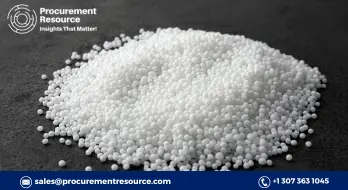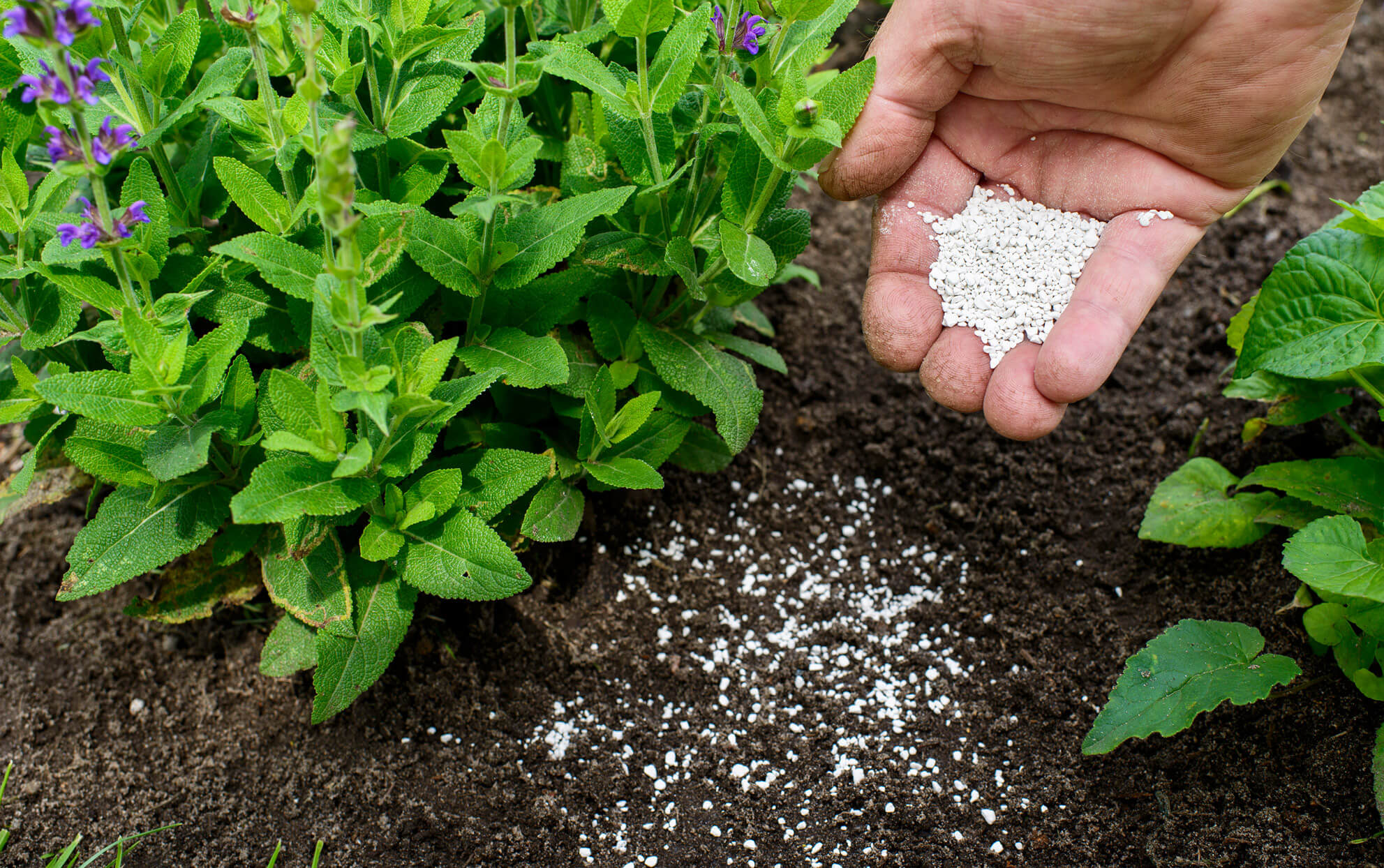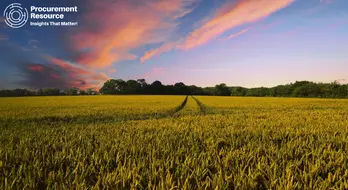Product
DAP (Diammonium Phosphate) Price Trend and Forecast
DAP (Diammonium Phosphate) Price Trend and Forecast
DAP Regional Price Overview
Get the latest insights on price movement and trend analysis of DAP (Diammonium Phosphate) in different regions across the world (Asia, Europe, North America, Latin America, and the Middle East & Africa).
Diammonium Phosphate Price Trend for the Q4 of 2024
Asia
In Q4 of 2024, the price of Diammonium Phosphate (DAP) witnessed a steady increase, driven by rising raw material costs and supply disruptions in key regions. In Asia, DAP prices experienced a moderate uptick as global price trends and a surge in import costs impacted the region.
Diammonium Phosphate (DAP) Price Chart
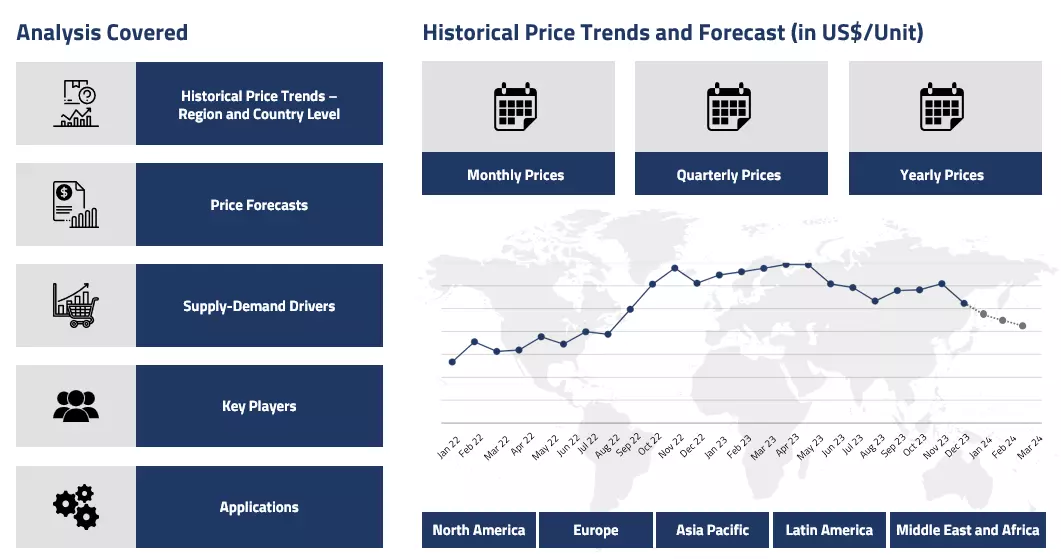
Please Login or Subscribe to Access the Diammonium Phosphate (DAP) Price Chart Data
The market saw a shortage of supply, primarily due to the increase in global DAP prices and a 26% rise in the landed cost of imports. This shortage, coupled with increased demand for winter crops, particularly in countries like India, led to inflation in the prices of DAP. The government’s efforts to manage subsidies, though effective to some extent, couldn't completely offset the higher costs, leading to a price rise by the end of the quarter.
Europe
In Europe, the DAP market faced similar challenges, though the price increases were somewhat less severe compared to Asia. The geopolitical tensions and disruptions in supply chains, particularly from regions like the Red Sea, had a direct impact on the price of DAP in the European market. The scarcity of raw materials and supply issues led to a gradual increase in prices, despite efforts to control subsidies and manage stock levels. Farmers were particularly affected by the rise in prices, although the government's measures, including the extension of the special package, were aimed at mitigating the impact on consumers. Even with these efforts, the overall price of DAP in Europe showed a steady climb, reflecting global trends.
North America
In North America, the price trend for DAP also mirrored the global upward movement. The market faced its own set of challenges, including a surge in import costs and a decrease in the availability of the fertilizer. Factors like global supply chain disruptions and the rising cost of production due to raw material price increases contributed to the upward pressure on prices. Despite government subsidies designed to stabilize the market, the increase in DAP prices was evident by the end of Q4. The higher prices, combined with regional supply constraints, left many farmers struggling to secure adequate amounts of the fertilizer for the upcoming season.
Analyst Insight
According to Procurement Resource, the price of DAP is expected to remain elevated, with continued pressure from raw material costs and supply chain issues. The government's ongoing efforts to manage subsidies will play a significant role in controlling the price hike, but the market is likely to see continued volatility in the near term.
Diammonium Phosphate Price Trend for the Q3 of 2024
Asia
The global Di-Ammonium Phosphate (DAP) market has shown distinct regional variations during the third quarter of 2024.
The Asian market has emerged as the strongest performer, demonstrating robust bullish sentiment driven by pre-seasonal buying and supply chain disruptions. Weather-related challenges, increased procurement activities, and limited supply availability have collectively supported the price uptrend in the region.
Europe
The European market has displayed moderate strength despite late-quarter softening. The market dynamics have been shaped by production cost escalations and seasonal demand patterns, though improved supply availability post-summer holidays have helped stabilize prices. Strong agricultural sector demand initially drove the market, but easing supply constraints towards quarter-end have tempered the price momentum.
North America
North American market has faced significant headwinds, with prices showing weakness due to subdued agricultural demand and operational challenges at manufacturing facilities. The market has been particularly impacted by feedstock availability issues and cautious buying behaviour among farmers, who are navigating concerns about inflation and crop price uncertainties. The reduced operational rates at manufacturing units have further contributed to market instability.
Analyst Insight
According to Procurement Resource, the sustainability of current price levels for Diammonium Phosphate (DAP) will largely depend on Indian import demand, potential changes in Chinese export policies, and evolving production costs, particularly natural gas prices. The market anticipates increased activity from Australian buyers in the coming months, while production capacity expansions from major producers in Morocco and Saudi Arabia could influence supply dynamics.
Diammonium Phosphate (DAP) Price Trend for the Q2 of 2024
Asia
The prices of Diammonium Phosphate (DAP) witnessed a gradual declining trend throughout the second quarter of 2024 in the Asian markets. At the beginning of the quarter, the prices in the Chinese market started receding after displaying a stable trajectory in the previous quarter. The fall in the prices continued until the middle of May, after which the prices stabilized. The primary reason for the decline in the DAP prices was the oversupply in the market due to export regulations. The Chinese market witnessed a weaker demand during the quarter. The price of Diammonium Phosphate (DAP) in April was around 544 USD/MT, which decreased to around 535 USD/MT in June in the Chinese domestic market.
Europe
Diammonium Phosphate (DAP) price chart showed a downward movement in the trend. Supply subtly exceeded the demand despite the overall freight constraints in the region particularly in the red sea, this situation led to a decline in the prices of fertilizer. Apart from this, the rising costs of raw materials, especially high phosphate rock prices, were pressurizing the phosphate market. Conclusively, the DAP market remained buoyant and primarily driven by the dull downstream demands.
North America
In Q2'24, the Diammonium Phosphate (DAP) prices resembled the trends of the other global markets, especially the Chinese market. Market faced significant challenges with the prices showing weakness due to subdued agricultural demand during the quarter. The fertilizer market in the region showed a bearish trend as agricultural producers had already secured the supplies for the planting season. Overall, the DAP price graph showed an overall drop due to seasonality in the demand.
Analyst Insight
According to Procurement Resource, Diammonium Phosphate (DAP) prices are expected to show corrections in the upcoming months, as the demand outlook from the agricultural sector is likely to show improvements.
DAP (Diammonium Phosphate) Price Trend for the Q1 of 2024
| Product | Category | Region | Price | Time Period |
| DAP | Agriculture, Farming and Commodity | Asia | USD 600/MT | March 2024 |
| DAP | Agriculture, Farming and Commodity | China | 558 USD/MT | January 2024 |
| DAP | Agriculture, Farming and Commodity | China | USD 552/MT | March 2024 |
Stay updated with the latest DAP (Diammonium Phosphate) prices, historical data, and tailored regional analysis
Asia
A number of manufacturing units in Asian countries adjusted their 2024 price quotations for diammonium phosphate, reflecting lower feedstock prices and renewed export restrictions in China. The stabilization in diammonium phosphate prices was attributed to the export restrictions in China along with the revision of feedstock cost due to improved supply and lowering of expenditure in energy production.
Despite the unchanged outlook of other fertilizers, including urea, phosphate rock, and potash, the market momentum of diammonium phosphate reflected a balanced scenario with steady demand supported by various factors such as affordability and demand growth in regions like Latin America and Southeast Asia.
The spot (FD) prices in China thus moved slightly from an average of 558 USD/MT to 552 USD/MT in the first quarter of 2024. In India, however, the cabinet approved a large sum of investment for subsidy on fertilizers, particularly of the derivatives of diammonium phosphate, in order to regulate the unchecked abrupt incline in its price trend. This resulted in the adoption of a stagnant stance by the Indian diammonium phosphate market and restricted its growth potential.
Europe
In Q1 of 2024, the European diammonium phosphate market faced bearish sentiments amid the ongoing regional conflict, resulting in low demand and stagnant prices. Due to the passing of the peak planting season, purchases for diammonium phosphate and its derivatives remained restricted, reflecting challenges for European farmers.
While German farmers initiated inquiries in order to stock up their inventories, the procurement rates for diammonium phosphate still reflected the changing dynamics of the market. On the other hand, domestic production remained stable, with companies maintaining regular operations. These factors contributed to a lack of upward pressure on prices of diammonium phosphate, maintaining the overall bearish outlook for the European ammonia market amidst prevailing geopolitical and agricultural challenges.
North America
In the first quarter of 2024, the North American diammonium phosphate market faced a pessimistic outlook due to an oversupply and subdued demand, both domestically and internationally. The key derivative of the commodity also experienced constrained demand in the domestic fertilizer market post-peak planting season. Brazil, a significant importer, further limited demand during the Carnival season resulting in the reduction of agricultural activities.
This seasonal trend decreased fertilizer demand as agricultural workers joined the festivities. The market was further pressured by ample domestic diammonium phosphate stockpiles and rising manufacturing operations, narrowing the gap between demand and supply. Consequently, prices continued to decline amidst this intricate interplay of factors, affecting both domestic and international market dynamics.
Analyst Insight
According to Procurement Resource, the price trend of Diammonium Phosphate is estimated to remain subdued as the passing of agriculture season and rising skepticism in the market momentum of downstream industries present a bleak picture for the forthcoming quarters.
Diammonium Phosphate (DAP) Price Trend for the October - December of 2023
| Product | Category | Region | Price | Time Period |
| DAP | Agriculture, Farming and Commodity | China | 535 USD/MT | October 2023 |
| DAP | Agriculture, Farming and Commodity | China | USD 570/MT | December’23 |
Stay updated with the latest DAP (Diammonium Phosphate) prices, historical data, and tailored regional analysis
Asia
The diammonium phosphate prices were observed to be rising in the Asian markets during the period under discussion. Q4 prices for DAP were primarily driven by the market demands from the agriculture industry. Diammonium phosphate is one of the most used phosphorous fertilizers in the agriculture sector. The feedstock ammonia and phosphoric acid also provided a positive push to the price trend.
In the Chinese diammonium phosphate market, an approximate growth of around 6% was observed within the three months as the monthly average spot prices moved from around 535 USD/MT in October to around 570 USD/MT in December’23. The Fertilizer Association of India also pointed out its concern over the rising DAP prices in the country in December’23, asking the government to consider raising the fertilizer subsidies. Overall, positive market trend were observed for DAP during the said period.
Europe
The European diammonium phosphate market also observed growth in the price graph during the given period of Q4’23. Since the Western sanctions on Russia tightened and the black sea deal between Russia, Ukraine, and the United Nations ended in July this year, the European fertilizer industry has been struggling consistently. Rising demands amidst tight supplies further boosted the DAP market sentiments during the given time.
North America
The situation in the North American diammonium phosphate market was also not much different from the other global markets. The DAP prices were found to be wavering upwards as the Russian and Israeli conflicts disrupted the supply chains amidst inclining market demands. Overall, a positively rising price graph was witnessed during the said period.
Analyst Insight
According to Procurement Resource, the Diammonium Phosphate market is expected to continue rising in the coming months, considering the healthy momentum driving the supply and demand dynamics of the concerned market.
Diammonium Phosphate (DAP) Price Trend for the July - September of 2023
| Product | Category | Region | Price | Time Period |
| DAP | Agriculture, Farming and Commodity | China | 514 USD/MT | July’23 |
| DAP | Agriculture, Farming and Commodity | China | 531 USD/MT | September’23 |
Stay updated with the latest DAP (Diammonium Phosphate) prices, historical data, and tailored regional analysis
Asia
Diammonium Phosphate (DAP) witnessed an uphill trek during the third quarter of the year 2023 in the Asian market. The rising costs of the feedstock ammonia and phosphoric acid drove the diammonium phosphate price trend up in the Asian market.
The stability in manufacturing, chemical, agrochemical, etc. industries in the regional markets, particularly Indian and Chinese markets, significantly balanced the production cost pressure from raw material and crude oil costs. After experiencing a quarterly surge of around 3%, the monthly average spot prices of diammonium phosphate rose from around 514 USD/MT in July’23 to about 531 USD/MT in September’23 in the Chinese domestic market. Overall, a positive price-performance was experienced during the said period.
Europe
Diammonium Phosphate experienced mixed price trend during Q3’23 in the European markets. The beginning of the quarter was rather dull as the demands felt sluggish. However, gradually, the situation started improving supported by the moderate rise in consuming sectors. Raw materials cost positively supported the market dynamics since the price trend align closely with each other. Overall, moderate market sentiments were noticed.
North America
The North American price graph for diammonium phosphate coincided closely with its European counterpart for the discussed span of Q3’23. After a cold start at the beginning of the quarter in July, the market trend gradually moved upward. The downstream demands and production costs influenced the rise in prices. The general market outlook was balanced throughout the said period.
Analyst Insight
According to Procurement Resource, the Diammonium Phosphate price trend are projected to have a similar market run in the coming months as well since the driving factors do not appear to be changing.
DAP (Diammonium Phosphate) Price Trend for the First Half of 2023
Asia
The Asian DAP (Diammonium Phosphate) prices exhibited fluctuating price trend throughout the first half of 2023. The Chinese market had a very stable start at the beginning of Q1 as the downstream demands from fertilizer and other sectors primarily drove the price trend.
Inventories were operating at sufficient capacity, which, coupled with steady demands, limited the market fluctuations to a very narrow range. But by the middle of the second quarter, the market offtakes started plunging, which shifted the market momentum southward. Overall, low swinging price trend for DAP were observed. Spot prices in the Chinese domestic market went from 586 USD/MT in January to around 534 USD/MT in June’23, registering an overall decline of 8% (approx.) during the said period.
Europe
The European DAP (Diammonium Phosphate) market behaved no differently than the Asian market. As the upstream costs decreased considerably owing to the reduced freight prices and normalization in crude oil prices, the price trend lowered. Weakened demands from the downstream sectors also didn’t provide much cost support. Overall, bearish market sentiments were observed in the European region throughout the said period.
North America
The North American DAP (Diammonium Phosphate) market also followed the global depreciating trend, with prices riding low during H1’23. Oversupplied inventories amidst lackluster demands resulted in these dimming price trend. The market exhibited bearish sentiments.
Analyst insight
According to Procurement Resource, the price trend for DAP (Diammonium Phosphate) are expected to continue behaving in a similar fluctuating manner since the dull demands and high inventories will continue to influence the market dynamics.
DAP (Diammonium Phosphate) Price Trend for the Second Half of 2022
Asia
The prices of diammonium phosphate recorded an oscillating pattern in the Asia-Pacific region during the said period. Initially, the region saw an incline in demand from the end-user industries amid a global shortage. This global shortage also led to an incline in exports from the region. However, soon this new-found momentum fizzled out and the DAP prices fell. The high price of raw materials, the surge in energy production costs, and disruptions in transport and fertilizer production negatively affected the market and thus a decline was registered in the price trend for diammonium phosphate.
Europe
The high prices of natural gas coupled with the ongoing energy crises led to the incline in the prices of diammonium phosphate. The operational costs and low supply from the manufacturers further fueled the incline in the prices. However, the prices fell slightly towards the start of the fourth quarter given the momentary decline in demand. The downstream buyers stockpiled the commodity in fear of low supplies and approaching winters creating a shortage of diammonium phosphate in the region, thereby, increasing the prices again.
North America
The North American region saw a decline in prices as the demand from the end-user industries plummeted. The inquiries remained negligible, and the traders looked eager to sell their piled-up inventories.
In addition to this, the region also saw labour shortage and port congestion challenges which led to a further decline in the prices. In addition to that, the rise in inflation and reduced buying potential from the market also affected the price trend of diammonium phosphate and thus it followed a downward trajectory.
Analyst Insight
According to Procurement Resource, the price trends for Diammonium Phosphate (DAP) are expected to decline in the upcoming quarter as demand from the end-user industries is quite feeble. In addition to that, the weak market dynamics and rise in inflation will also continue to affect the DAP prices.
DAP (Diammonium Phosphate) Price Trend For the Second Quarter of 2022
Asia
India, the world's largest consumer of urea and DAP, is highly dependent on imports to meet its domestic requirements. The continuing geopolitical dynamics caused the price of fertilizers to increase constantly. With India importing over 1/3 of its total phosphate fertilizers, rising global prices caused massive volatility in the domestic market.
With inflated international prices, tightened global supply and rising domestic demand, DAP prices tipped towards the other end of the scale. Similarly, with China resuming its production post the covid-19 restrictions, the heightened market sentiment caused the prices to rise in the Asia.
Europe
The price trends of the fertilizer stood firm in the European market during the said quarter. Per ton price of DAP went from 954 USD in April 2022 to 783.8 USD in June 2022. Prices decreased towards the end of this quarter due to muted market sentiments amidst the runaway inflation in Europe.
North America
In line with the European market, its price trends weakened in this quarter. The constant supply chain disruptions, the increased cost of natural gas, hampered production and demand destruction contributed to this decrease. The US DAP spot price (Gulf) averaged 783.75 USD/MT for June 2022, which is approximately 6.97% less than that for May 2022, i.e., 845.5 USD/MT.
DAP (Diammonium Phosphate) Price Trend For the First Quarter of 2022
North America
In the fourth week of March 2022, significantly increased retail fertiliser prices returned in the Ohama region of America. DAP was 16% more expensive in March than it was in February, averaging 1,014 USD/MT. The previous high for the phosphorus fertiliser was established in the first week of November 2008, at 984 USD/MT.
The short-lived strike may have caused some potash difficulties, but the biggest stressor on fertiliser right now is transportation bottlenecks in the Black Sea region. Global potash supplies have decreased as a result of Russian and Belarusian producers effectively ceasing to export the fertiliser following Russia's invasion of Ukraine.
DAP (Diammonium Phosphate) Price Trend For the Fourth Quarter of 2021
Asia
The price rose sharply this quarter, owing to strong demand and a global scarcity. The Chinese government imposed a prohibition on the export of various phosphates, which had a direct impact on supplies in the Indian market. In addition, the beginning of Rabi season boosted demand in India.
Strong domestic and worldwide demand, low fertiliser stocks, and the domestic fertiliser sector's failure to alter production levels all contributed to the price hike. Natural gas prices in the upstream have risen considerably this quarter, influencing the cost of all fertilisers. In the Indian market, CFR JNPT prices jumped to INR 59 per kg, while Chinese offers in December last week were reported at 595 USD/MT FOB Qingdao.
Europe
Due to rising natural gas prices, which caused an energy crisis in Europe, demand for the fertiliser remained high. Despite the fast spread of COVID 19, agrochemical production remained minimal due to transportation limitations. Several customers requested early contract purchases of DAP in anticipation of high demand during the winter season, which increased imports and prices towards the end of Q4 2021.
North America
DAP prices stood around historic levels in the fourth quarter of 2021, owing to greater demand throughout the spring season. Reduced supply availability worsened the pricing impact of lower spring demand, with some analysts expecting DAP demand losses.
On the supply side, export limitations imposed by China and Russia reduced global availability somewhat in the quarter, boosting import competition and causing fresh offshore supply concerns, as US trade flows had just recently adapted to the loss of Russian and Moroccan exports. In a number of important global regions, higher prices are also reducing consumer expectations. DAP prices in the United States were quoted at 760 USD/MT DEL Illinois during the last week of December.
Latin America
Fertiliser prices rose as a result of record natural gas and coal prices, which had prompted output cuts in the energy-intensive fertiliser sector. The price of urea has increased by more than 200 percent this year, while the price of DAP nearly doubled. Brazil is the world's leading soybean producer and the world's third-largest corn producer. DAP prices were 4,035.79 BRL/MT in Brazil. The country had warned that a fertiliser scarcity next year will hinder the expansion of soy, corn, and cotton farms.
DAP (Diammonium Phosphate) Price Trend For First, Second and Third Quarters of 2021
Asia
Domestic demand for the fertiliser in Asia was modest to low, but export demand from the United States and Europe was strong. Domestic demand in China remained mild, but export demand was higher than expected, owing to a local material constraint caused by decreasing upstream natural gas availability, which effectively pressured DAP prices to rise in the region.
Meanwhile, domestic demand from the agriculture industry in India was low, so producers boosted their exports to meet rising demand from the United States and Europe. Despite stable demand from Indian markets, retail DAP prices increased by more than 50% throughout the quarter, boosted by worldwide rate increases.
Despite a significant scarcity across the globe, demand for diammonium phosphate remained strong in Asia this quarter. Retail DAP prices rose by roughly 40% to 60% in India at the end of May, owing to robust demand and firming feedstock value. As a result of the strong demand prognosis, prices hovered above 509 USD/MT in May 2021. To counter the sharp increase in DAP prices, the government had to step in and provide a subsidy while still protecting farmers' interests. Similarly, due to increasing import demand from Bangladesh and other worldwide markets, prices in China rose dramatically.
During Q3, DAP prices in Asia increased exponentially, owing to strong demand from downstream sectors despite limited supply. A sharp increase in feedstock values was seen in China, resulting in a spike in its prices across the area. Several other causes, such as low production rates due to energy shortages and supply disruptions exacerbated by congestion at several Chinese ports, also contributed to the increase in DAP cost in this timeframe.
Prices also increased in India, owing to a lack of supply and strong demand from downstream firms. In addition, rising freight costs and container shortages wreaked havoc on DAP's value. As a result, the monthly average price of the fertiliser in September was 652.49 USD/MT, up roughly 60 USD/MT from July.
Europe
Due to the onset of the spring season in Europe, there was a surge in demand for the fertiliser from the agricultural sector. Because of the significant demand from both the domestic and international markets, producers planned to raise its prices in the coming months. Due to a shortage of DAP in the United States, European producers were forced to increase their export volumes in order to boost their margins and price premiums.
During the second quarter of 2021, high global demand pushed up DAP prices in Europe. In the meantime, Europe's import demand remained strong, and dealers were willing to pay premiums for cargoes arriving from India and the Middle East. In addition, the rise in its costs in Europe was aided by an increase in feedstock ammonia and phosphoric acid prices due to scarcity. On the demand side, end-user demand for the fertiliser remained high enough to support this sharp increase in the region.
The steady increase in the value of DAP in Europe during the third quarter of 2021 was due to skyrocketing Natural Gas prices due to restricted supplies. Due to the European energy crisis, many big manufacturers were forced to reduce their production rates, which assisted the DAP pricing trend. Furthermore, during Q3 2021, a jump in the global market for feed ammonia and phosphoric acid affected the prices of the fertiliser in Europe. The downstream sectors' demand, on the other hand, remained strong throughout the quarter.
North America
The fertiliser remained resilient across the area and globally during Q1 2021, resulting in continuing price escalation, which was exacerbated by the winter storm that slammed the US Gulf Coast. This price increase was caused by a scarcity of upstream minerals such as nitrogen.
Several nitrogen manufacturers shut down their plants due to the harsh weather, resulting in a feedstock ammonia scarcity. Prices soared across the region as a result of these conditions, reaching 576.7 USD/MT in March. This price increase was aided by strong local demand, which resulted in a greater reliance on imports from Europe.
During the second part of the quarter, demand in the United States increased due to higher farming activity and favourable weather conditions. DAP prices began to fall in April due to plentiful spot availability in the country and soaring demand.
However, in the second half of the quarter, prices began to rise, aided by clear weather and increasing end-user offtakes. As a result, DAP prices hit 624 USD/MT in mid-June. Furthermore, despite steady offtakes, supply remained sufficient to meet demand, and prices remained stable throughout the month of June.
The market forecast for the fertiliser in North America appeared bright in the third quarter, with growing demands and tight dynamics keeping prices on the rise. As a result of the Ida hurricane, most industries and refineries along the Gulf Coast of the United States were closed by the end of August, affecting North America's production and supply chain. However, following the recovery in commercial and industrial activity, there was an improvement in end-user offtakes in this timeframe. As a result, FOB NOLA prices hovered at 650-700 USD/MT in September, indicating a rise of 60-110 USD/MT over the previous quarter.
Latin America
Brazil is the world's fourth largest fertiliser consumer (after China, India, and the United States) and imports over 80% of its fertiliser needs. The prices increased considerably from January to September 2021. The costs increased by 57% to 4,922 BRL/acre this season compared to last. For one acre, the exchange ratio of a 60 kg bag of maize to NPK (nitrogen, phosphate, and potassium) and DAP climbed to 92% and 60%, respectively.
This exchange rate is the amount of corn required to purchase one acre of fertiliser. Fertiliser prices had risen for a variety of reasons. They included supply interruptions induced by Hurricane Ida in late August 2021, which led to plant closures, an increase in natural gas prices, and overall supply constraints and labour issues related with COVID-19.
DAP (Diammonium Phosphate) Price Trend For the Year 2020
Asia
The Asian Diammonium Phosphate market remained stable in Q4 2020, owing to strong demand from the fertiliser industry. Domestic supply of phosphate fertilisers in China was considered low before November, as individual firms were more likely to cater to worldwide demand in the hopes of better netbacks. Its imports from the United States had significantly decreased by November, resulting in a shortfall of DAP in a number of countries across the region. Furthermore, favourable weather conditions during the rabi season boosted its market sentiments in India.
Europe
Demand in Europe remained modest, as only a few nations participated in spot buying activities, while the majority remained quiet. Despite the fast spread of COVID 19, agrochemical production remained minimal due to transportation limitations. Several customers requested advance contractual purchases of the fertiliser in anticipation of strong demand in the spring season, which resulted in higher imports and prices towards the end of Q4 2020.
North America
The price of most agrochemicals accelerated in early Q4 2020 due to a lack of DAP and other phosphate salts in the region. The shortage was caused by a lower production rate as a result of damage caused by a series of hurricanes in October. Later in December 2020, demand remained strong, but supply shrank slightly, causing its prices to rise once again. Although, by the end of December, the month-over-month increase in regional production rates had steadily softened their pricing.
Latin America
After two years of decline, the South American diammonium phosphate industry was finally on the increase, with a target date of 2020. Consumption, on the other hand, showed a noticeable decrease. Mexico continued to be the world's top producer of diammonium phosphate throughout Latin America and the Caribbean.
Procurement Resource provides latest prices of DAP (Diammonium Phosphate). Each price database is tied to a user-friendly graphing tool dating back to 2014, which provides a range of functionalities: configuration of price series over user defined time period; comparison of product movements across countries; customisation of price currencies and unit; extraction of price data as excel files to be used offline.
About DAP
Diammonium Phosphate or DAP is an inorganic phosphate. It is a part of the diammonium salt of phosphoric acid. Being an inorganic phosphate as well as an ammonium salt, it depicts properties of both. It is soluble in water.
DAP Product Details
| Report Features | Details |
| Product Name | DAP (Diammonium Phosphate) |
| Chemical Formula | (NH4)2HPO4 |
| Industrial Uses | Phosphorus fertiliser, Industrial processes, Fire retardant, Yeast fermentation |
| Molecular Weight | 132.06 g/mol |
| Synonyms | 7783-28-0, Diammonium hydrogen phosphate, Diammonium hydrogenphosphate, Ammonium phosphate dibasic, Phosphoric acid, diammonium salt |
| Supplier Database | Sichuan Blue Sword Chemical (Group)Co.,Ltd., Jordan Phosphate Mines Co.PLC, Coromandel International Limited, Ava Chemicals, Ballance Agri-Nutrients Ltd., Sichuan Chuanxi Xingda Chemical Co., China Blue Chemicals Ltd., Saudi Arabian Mining Company ("MA'ADEN") |
| Region/Countries Covered | Asia Pacific: China, India, Indonesia, Pakistan, Bangladesh, Japan, Philippines, Vietnam, Iran, Thailand, South Korea, Iraq, Saudi Arabia, Malaysia, Nepal, Taiwan, Sri Lanka, UAE, Israel, Hongkong, Singapore, Oman, Kuwait, Qatar, Australia, and New Zealand Europe: Germany, France, United Kingdom, Italy, Spain, Russia, Turkey, Netherlands, Poland, Sweden, Belgium, Austria, Ireland Switzerland, Norway, Denmark, Romania, Finland, Czech Republic, Portugal and Greece North America: United States and Canada Latin America: Brazil, Mexico, Argentina, Columbia, Chile, Ecuador, and Peru Africa: South Africa, Nigeria, Egypt, Algeria, Morocco |
| Currency | US$ (Data can also be provided in local currency) |
| Supplier Database Availability | Yes |
| Customization Scope | The report can be customized as per the requirements of the customer |
| Post-Sale Analyst Support | 360-degree analyst support after report delivery |
Note: Our supplier search experts can assist your procurement teams in compiling and validating a list of suppliers indicating they have products, services, and capabilities that meet your company's needs.
DAP Production Processes
- Diammonium Phosphate Production via Phosphoric Acid and Ammonia.
In this process, phosphorus pentoxide and nitrogen are mixed in specific quantity to finally obtain Diammonium Phosphate in granular form for direct application as fertilizer.
Methodology
The displayed pricing data is derived through weighted average purchase price, including contract and spot transactions at the specified locations unless otherwise stated. The information provided comes from the compilation and processing of commercial data officially reported for each nation (i.e. government agencies, external trade bodies, and industry publications).
Assistance from Experts
Procurement Resource is a one-stop solution for businesses aiming at the best industry insights and market evaluation in the arena of procurement. Our team of market leaders covers all the facets of procurement strategies with its holistic industry reports, extensive production cost and pre-feasibility insights, and price trends dynamics impacting the cost trajectories of the plethora of products encompassing various industries. With the best analysis of the market trends and comprehensive consulting in light of the best strategic footstep, Procurement Resource got all that it takes.
Client's Satisfaction
Procurement Resource has made a mark for itself in terms of its rigorous assistance to its clientele. Our experienced panel of experts leave no stone unturned in ensuring the expertise at every step of our clients' strategic procurement journey. Our prompt assistance, prudential analysis, and pragmatic tactics considering the best procurement move for industries are all that sets us apart. We at Procurement Resource value our clients, which our clients vouch for.
Assured Quality
Expertise, judiciousness, and expedience are the crucial aspects of our modus operandi at Procurement Resource. Quality is non-negotiable, and we don't compromise on that. Our best-in-class solutions, elaborative consulting substantiated by exhaustive evaluation, and fool-proof reports have led us to come this far, making us the ‘numero uno' in the domain of procurement. Be it exclusive qualitative research or assiduous quantitative research methodologies, our high quality of work is what our clients swear by.
Related News
Table Of Contents
Our Clients

Get in Touch With Us
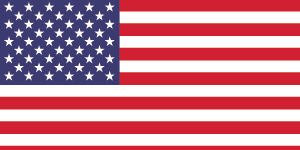
UNITED STATES
Phone:+1 307 363 1045
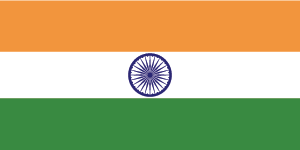
INDIA
Phone: +91 8850629517
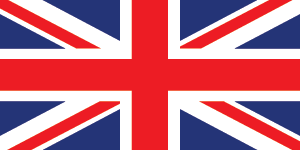
UNITED KINGDOM
Phone: +44 7537 171117
Email: sales@procurementresource.com


